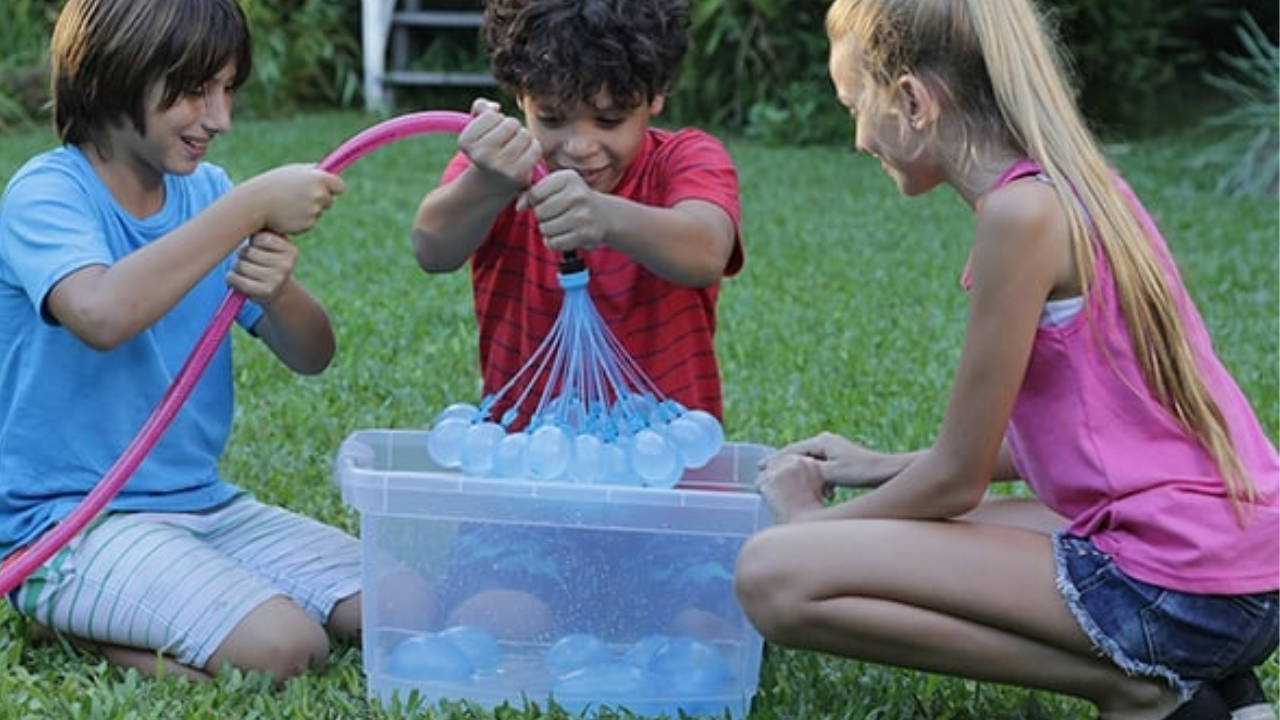Traditional water balloons are usually made of non-biodegradable materials like plastic or latex. In contrast, biodegradable water balloons offer a sustainable and environmentally friendly option. Materials like natural latex or other biodegradable polymers create these ecologically friendly balloons.
The main characteristic of biodegradable water balloons is their gradual disintegration into innocuous elements when left in the open air. Because biodegradable water balloons eventually break down into non-toxic materials, they have less of an adverse effect on ecosystems than their non-biodegradable counterparts.
Do Water Balloons Made of Biodegradable Materials Harm the Environment?
Unlike conventional balloons, biodegradable water balloons are made to decompose naturally over time, lessening their impact on the environment. However, while they degrade, pollutants may still be released or wildlife may be harmed. Furthermore, techniques used in production and disposal may exacerbate environmental problems. Environmental conservation depends on reducing balloon use overall and choosing sustainable, alternative forms of entertainment, even though biodegradable options are preferable to non-biodegradable ones.
Materials Used in the Production of Biodegradable Water Balloons
Compared to conventional water balloons, biodegradable water balloons are usually composed of materials that decompose more readily in the environment. The following are the main components of biodegradable water balloons:
Natural Latex: The First Biodegradable Material
Natural latex is one of the main components of biodegradable water balloons. Latex, made from rubber tree sap, is a great starting point for creating environmentally friendly balloons. It’s a sustainable option because the latex is harvested without causing damage to the trees during the production process. Moreover, natural rubber has a much smaller environmental impact than synthetic rubber because it breaks down faster.
Plant-Based Polymers: A Growing Trend
Using plant-based polymers to create biodegradable water balloons has garnered attention in recent years. These polymers provide a sustainable substitute for conventional plastic balloons because they are made from renewable resources like cornstarch or sugarcane. Plant-based polymers can decompose naturally and leave no toxic residue in their wake.
Algae-Based Materials: Harnessing Nature’s Power
A broad class of photosynthetic organisms known as algae have gained attention as a potential source of biodegradable materials. A few businesses are experimenting with biodegradable water balloons that also take advantage of the advantages that algae farming has for the environment by using polymers derived from algae. Materials made of algae frequently break down more quickly than conventional plastics and, as they disintegrate, may even improve the soil.
Edible Materials: Adding a Fun Twist
Some manufacturers are investigating the use of edible materials in biodegradable water balloons as a means of coming up with novel solutions. In addition to decomposing innocuously, balloons made of ingredients like tapioca starch or other edible polymers can be eaten by microbes or animals. A fun and environmentally friendly twist on the classic water balloon ride is provided by this method.
Paper Balloons: A Truly Earth-Friendly Option
Paper balloons are becoming more and more popular as a plastic-free option for individuals searching. These balloons are compostable and biodegradable since they are made of paper that has been recycled or obtained responsibly. Making them durable enough to withstand the water without sacrificing their environmental friendliness is the difficult part. However, improvements in paper technology are constantly resolving this problem.
Materials Soluble in Water: Disappearing Act
Water-soluble substances, like specific kinds of starches, are also being investigated as a potential source for biodegradable water balloons. When these balloons come into contact with water, they are meant to disintegrate and disappear. Water-soluble materials show promise in providing a disappearing act after the water balloon fight is over, minimizing environmental impact, even though the technology is still developing.
Conclusion
The growing environmental consciousness of society has led to a growing need for sustainable substitutes for common products. Biodegradable water balloons are a positive step because they provide an excuse to indulge in the harmless fun of a water balloon fight without feeling guilty. With innovations that put enjoyment and environmental responsibility first, the future of water balloon fun appears bright.
